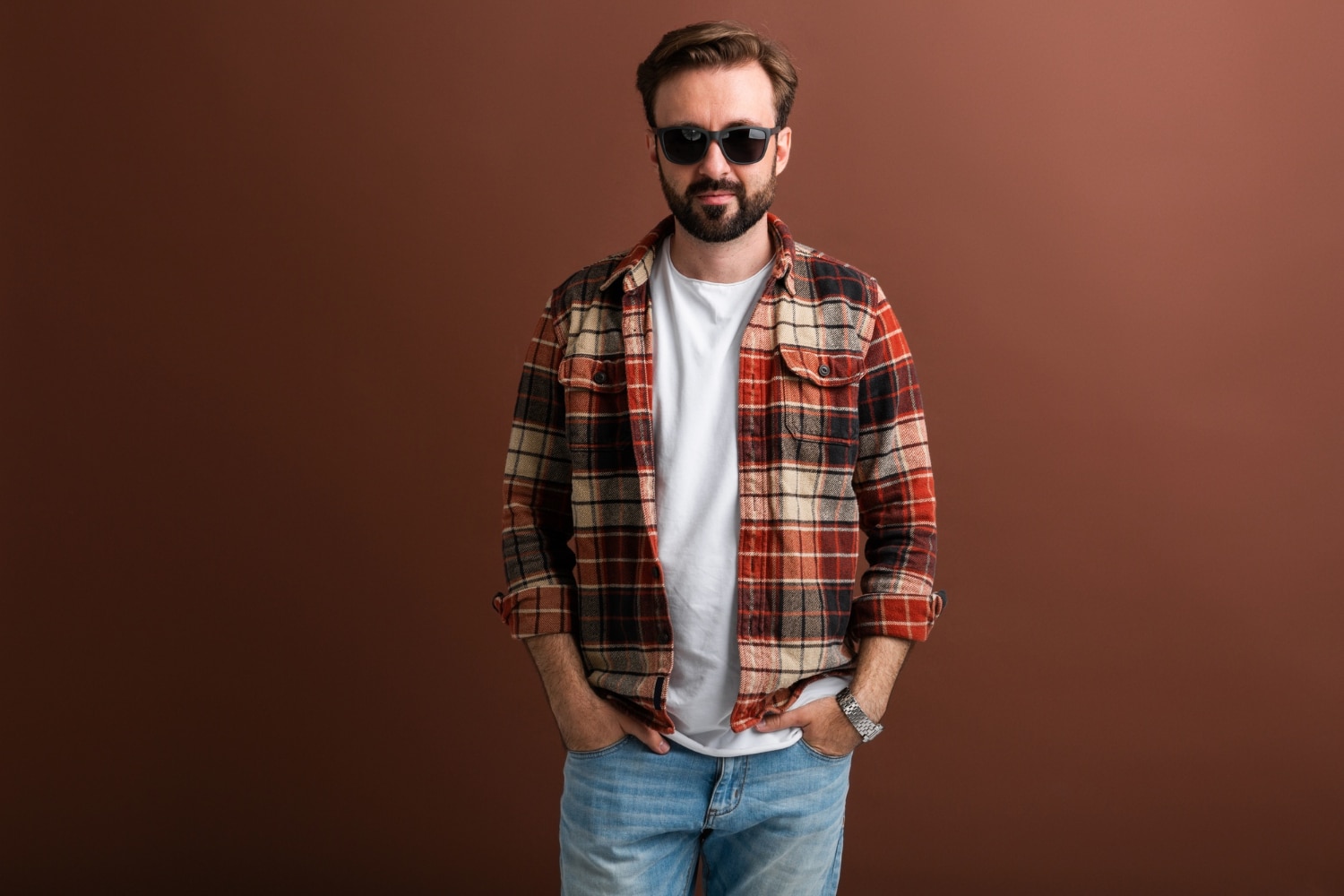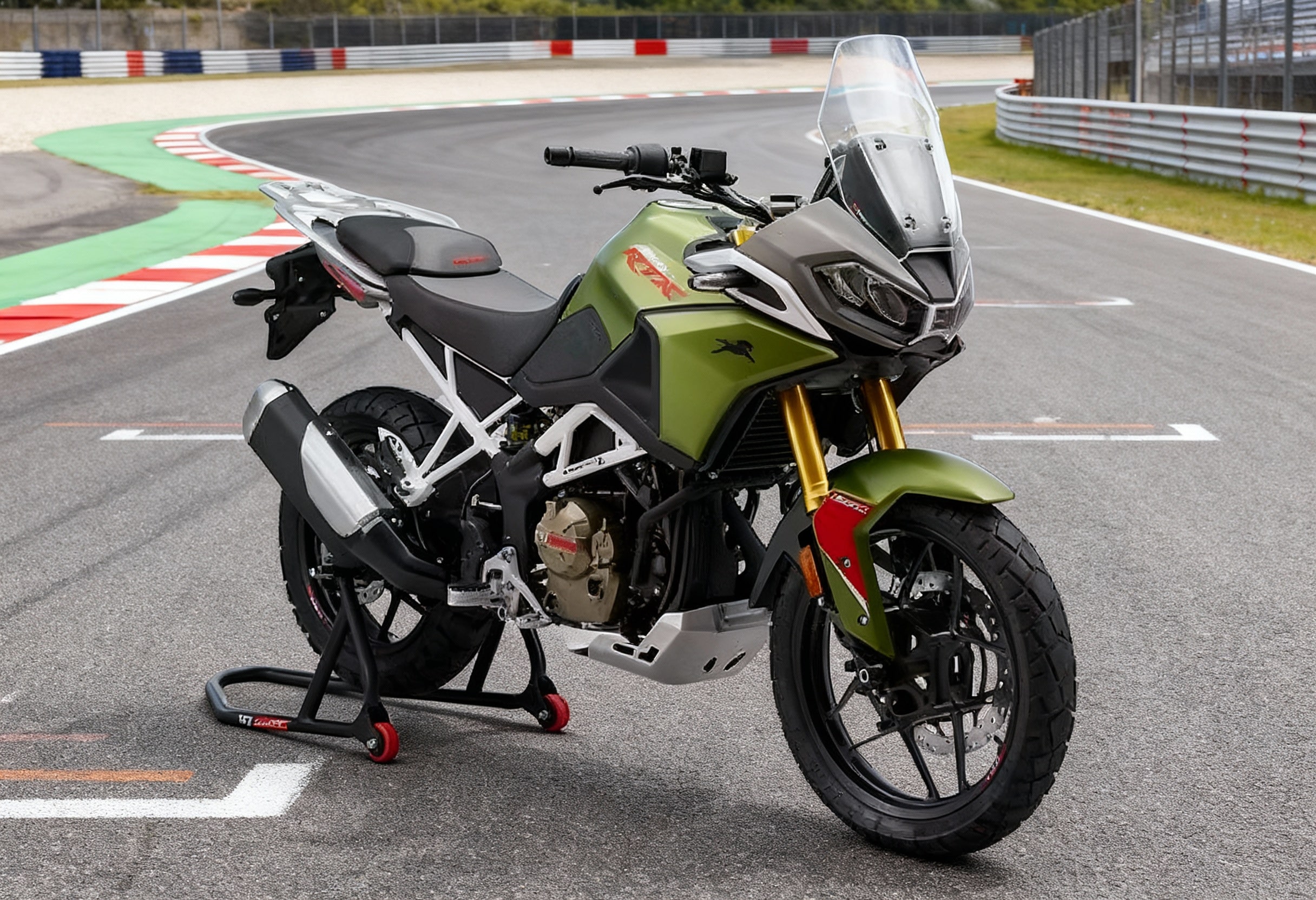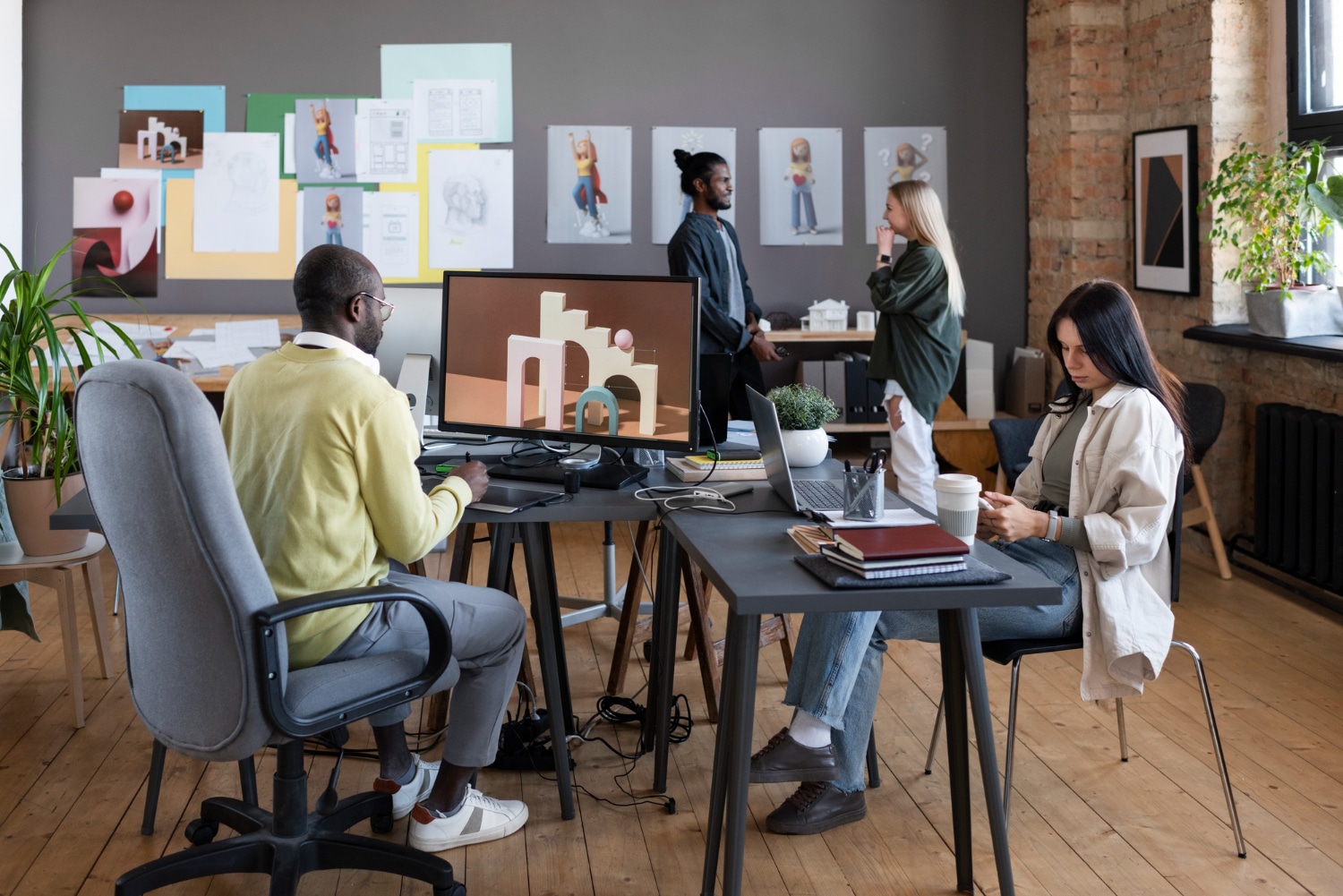Let’s be honest—building a wardrobe that works for every occasion without breaking the bank can feel like trying to solve a complex puzzle. You stand in front of your closet every morning, surrounded by clothes, yet somehow you still feel like you have nothing to wear. Sound familiar?
The secret to ending this daily struggle isn’t about having more clothes. It’s about having the right clothes. The kind of pieces that work together seamlessly, make you look put-together without trying too hard, and don’t require a second mortgage to afford.
After years of observing style trends, talking to fashion-conscious men, and learning from style experts, I’ve identified the essential pieces that form the foundation of a versatile, affordable wardrobe. These aren’t trendy items that’ll be outdated next season, they’re timeless staples that’ll serve you well for years to come.
Let me walk you through the 10 affordable men’s fashion staples that every guy should own, regardless of age, profession, or personal style.
Why Fashion Staples Matter More Than Trends
Before we dive into the specific items, let’s talk about why building a wardrobe around staples is such a smart strategy.
Fashion trends come and go faster than you can say “drop-crotch pants.” Remember when everyone was wearing skinny jeans so tight they could barely sit down? Or when oversized everything dominated the runways? Trends are fun to experiment with, but they shouldn’t form the backbone of your wardrobe.
Staple pieces, on the other hand, are the reliable players on your style team. They’re the items you can wear year after year, mix and match endlessly, and always look appropriate. According to a survey by the American Apparel & Footwear Association, men who invest in quality basics report feeling more confident and spending less time deciding what to wear—a win-win situation.
Think of your wardrobe like a recipe. Staples are your essential ingredients—flour, eggs, butter. Trendy pieces are your spices and garnishes. You need the basics first; then you can get creative.
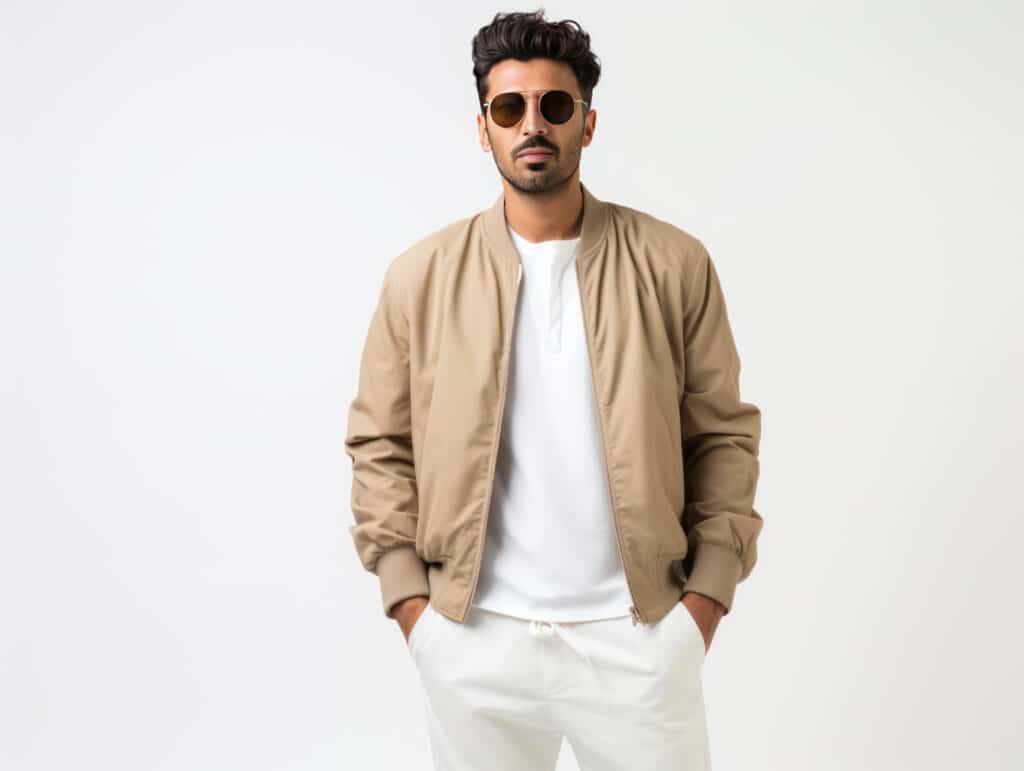
1. The Perfect White T-Shirt
Let’s start with the most fundamental piece in men’s fashion: a high-quality white t-shirt.
I know what you’re thinking—”It’s just a t-shirt, what’s the big deal?” But here’s the thing: not all white tees are created equal. A cheap, thin white t-shirt looks sloppy and becomes transparent when you sweat. A well-made one looks intentional and elevated.
Look for t-shirts made from heavyweight cotton (around 180-200 GSM) with reinforced stitching at the shoulders and sleeves. The fit is crucial—it should skim your body without clinging or billowing. Brands like Uniqlo, Everlane, and even H&M’s premium line offer excellent options under $20.
Why you need it: A white t-shirt works under blazers for smart-casual looks, pairs perfectly with jeans for weekends, and layers well under jackets. You’ll wear it constantly, so buy 2-3 and rotate them.
Styling tip: Tuck it into chinos with a leather belt for an effortlessly cool look, or wear it untucked with dark jeans and white sneakers for classic casual style.
2. Dark Wash Jeans
If there’s one item that deserves a slightly higher investment, it’s a great pair of dark wash jeans. They’re the Swiss Army knife of men’s fashion.
Dark denim (think indigo or black) is incredibly versatile. Unlike light-wash jeans that scream “weekend only,” dark jeans can transition from casual Friday at the office to dinner dates to weekend barbecues. The darker color also creates a slimming effect and hides stains better than lighter washes.
Focus on fit over brand name. A $60 pair that fits perfectly beats a $200 pair that doesn’t. Look for a straight or slim fit depending on your preference—avoid overly trendy cuts that’ll date quickly. Target, Levi’s, and Gap regularly offer quality denim in the $40-80 range.
Why you need it: Dark jeans are arguably the most versatile pants you’ll own. They work with everything from t-shirts to button-downs to blazers.
Styling tip: Pair with a crisp button-down and Chelsea boots for a date, or throw on a hoodie and sneakers for running errands. The same jeans work for both occasions.
3. Classic White Sneakers
The rise of athleisure has made sneakers acceptable in nearly every casual setting, and white sneakers have emerged as the undisputed champion of versatile footwear.
A clean pair of white sneakers elevates even the simplest outfit. They look fresh, modern, and work with virtually everything in your closet. Studies show that sneakers have become the dominant footwear choice for men under 40, with white colorways being the most popular.
You don’t need to spend $400 on designer sneakers. Brands like Adidas (Stan Smiths), Nike (Air Force 1s), or even budget-friendly options like Greats and Koio offer sleek, minimalist white sneakers for under $100.
Why you need them: White sneakers bridge the gap between casual and smart-casual. They’re comfortable enough for all-day wear but polished enough for most social settings.
Care tip: Keep them clean with a magic eraser or specialized sneaker cleaner. White sneakers only look good when they’re fresh—dingy, yellowed sneakers have the opposite effect.
4. Navy Crewneck Sweater
A navy crewneck sweater is like a warm hug that also happens to make you look sophisticated.
Navy is a neutral that works with virtually every other color. Unlike black, which can look harsh in casual settings, navy feels approachable and refined. The crewneck style is timeless—no trendy shawl collars or zip details to date it.
Look for a medium-weight cotton or cotton-blend sweater that works for both fall and spring. Merino wool is excellent if you can stretch the budget slightly, as it’s naturally temperature-regulating and doesn’t pill easily. Uniqlo, J.Crew Factory, and Banana Republic regularly offer quality options under $50.
Why you need it: Layer it over button-downs for business casual settings, wear it alone with jeans for weekends, or throw it over a t-shirt for extra warmth. One sweater, countless outfit combinations.
Styling tip: The “sweater over collared shirt” look instantly elevates your style. Make sure the collar and cuffs of your shirt are visible for a polished appearance.
5. Crisp White Button-Down Shirt
A white button-down shirt is the workhorse of a man’s wardrobe. It’s been a staple for generations, and for good reason—it simply works.
The key is finding the right fit. The shoulder seam should sit right at your shoulder edge, the body should be fitted but not tight, and the length should allow you to tuck it in comfortably. Oxford cloth is a great fabric choice—it’s slightly more casual than dress shirt fabric but still looks polished.
You can find excellent white button-downs at almost any price point. Charles Tyrwhitt, Brooks Brothers on sale, and even Amazon’s Buttoned Down brand offer quality options between $30-60.
Why you need it: From job interviews to weddings to smart-casual dinners, a white button-down handles it all. Roll up the sleeves for a more relaxed look, or keep them down and add a tie for formal occasions.
Pro tip: Get your white shirts tailored if they don’t fit perfectly off the rack. Even basic alterations (taking in the sides, adjusting sleeve length) transform an okay shirt into a great one for about $20.
6. Versatile Chinos
Jeans are great, but you need at least one pair of chinos to round out your wardrobe. They’re dressier than jeans but more casual than dress pants—perfect for that vast middle ground of modern dress codes.
Start with a neutral color like khaki, navy, or gray. These shades coordinate with everything and work for multiple seasons. The fit should be similar to your jeans—fitted but comfortable, with a slight taper toward the ankle for a modern silhouette.
Brands like Dockers, Banana Republic, and Old Navy offer solid chinos in the $40-70 range. Look for a cotton-stretch blend that gives you freedom of movement while maintaining structure.
Why you need them: Chinos instantly elevate your look compared to jeans. They’re acceptable for business casual offices, nice enough for date nights, and comfortable enough for everyday wear.
Styling tip: Cuff your chinos to show a bit of ankle with loafers or boat shoes in summer for a relaxed, coastal vibe.
7. Gray Henley
A henley strikes the perfect balance between a t-shirt and a button-down. The partial button placket adds visual interest and versatility without the formality of a full button-down.
Gray is the ideal color because it’s a true neutral that works with any other color in your wardrobe. A medium gray heather hides minor stains and looks equally good alone or layered under jackets.
Look for a fitted but not tight cut in a substantial cotton fabric. Long sleeves are more versatile than short, as you can always roll them up. Target, Old Navy, and Gap regularly stock quality henleys for $15-30.
Why you need it: Henleys add variety to your casual wardrobe without being too trendy. They’re perfect for transitional seasons and layer beautifully.
Styling tip: Wear it with dark jeans and Chelsea boots for a rugged, masculine look, or layer it under a denim jacket for additional warmth and style.
8. Timeless Leather Belt
A quality leather belt is one of those items that quietly communicates whether you pay attention to details.
You need at least two: one brown and one black. The belt should match your shoes—brown belt with brown shoes, black with black. This simple rule instantly makes you look more put-together.
Full-grain leather is the gold standard. It develops a beautiful patina over time rather than cracking and peeling like lower-quality leather. Look for belts with sturdy stitching and a classic buckle design—nothing too trendy or flashy.
You don’t need designer belts, but skip the $10 options from fast fashion stores. A $40-60 full-grain leather belt from brands like Hank’s Belts or Orion will last you 10+ years, making it one of the best value investments in your wardrobe.
Why you need them: Beyond their functional purpose, belts add a finishing touch to any outfit with pants. They also help create a cleaner silhouette by defining your waistline.
Care tip: Condition leather belts once or twice a year with leather cream to keep them supple and prevent cracking.
9. Navy Blazer
A navy blazer is the secret weapon that transforms your wardrobe’s versatility exponentially. It’s the piece that makes everything else look better.
Unlike suit jackets that must be worn with matching pants, a navy blazer pairs with jeans, chinos, dress pants—basically any bottoms you own. It’s professional enough for business settings but works equally well for date nights, weddings, or any occasion that calls for “smart casual.”
The fit is paramount with blazers. The shoulders should fit perfectly (alterations can’t fix bad shoulders), but everything else can be tailored. Look for a modern cut that’s fitted but not restrictive. Unstructured or half-structured blazers are more versatile and comfortable than fully structured options.
You can find excellent blazers at outlet stores, during sales at J.Crew or Banana Republic, or even at thrift stores. Budget $100-200, but watch for sales—many retailers offer 40-50% off periodically.
Why you need it: A blazer instantly upgrades any outfit. Jeans and t-shirt? Throw on a blazer and suddenly you’re stylish. Button-down and chinos? Add a blazer and you’re ready for a business meeting.
Styling tip: Keep it unbuttoned for a relaxed look. Roll the sleeves to the forearm for casual occasions—this works surprisingly well and prevents the “salesman” vibe.
10. Versatile Jacket
Every guy needs an outer layer that works for three seasons and multiple situations. A versatile jacket is your insurance policy against unpredictable weather and last-minute plans.
The best options are a dark denim jacket, a chore coat, or a lightweight field jacket. These styles are casual enough for weekends but refined enough to wear over button-downs. They add texture and dimension to outfits while providing practical warmth.
Look for neutral colors—dark indigo denim, olive, tan, or navy. The fit should allow you to layer a sweater underneath without looking bulky. Levi’s, Carhartt WIP, and Gap offer solid options in the $60-120 range.
Why you need it: Spring, fall, and cool summer evenings all require a light jacket. Having a stylish option means you’re always prepared without resorting to your old college hoodie.
Styling tip: Wear over a henley or t-shirt for casual looks, or layer over a button-down when you need to dress up slightly. Leave it unzipped for a relaxed vibe.
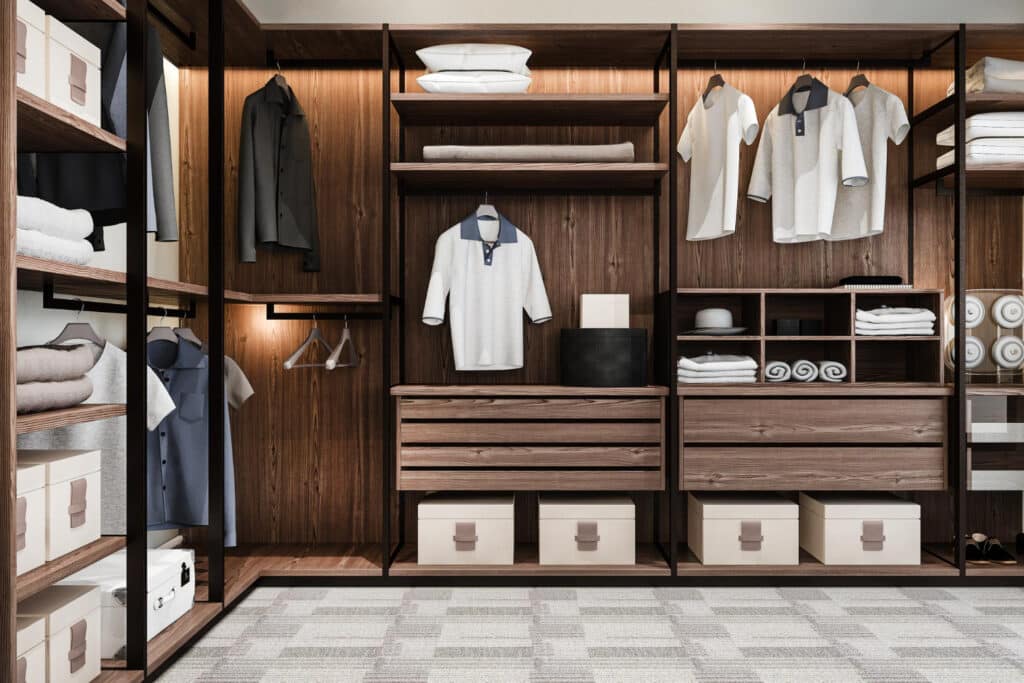
Building Your Wardrobe Strategically
Now that you know the essential pieces, let’s talk strategy. Don’t feel pressured to buy everything at once. Building a solid wardrobe is a marathon, not a sprint.
Start with the items you’ll wear most frequently based on your lifestyle. Office workers might prioritize the button-down and chinos. Remote workers might start with jeans and versatile shirts. Students might focus on jeans, t-shirts, and sneakers.
Buy one quality piece at a time rather than loading up on cheap items that’ll wear out quickly. A $50 pair of jeans that lasts five years is a better investment than a $20 pair that falls apart in six months.
Watch for sales and seasonal clearances. Memorial Day, Labor Day, Black Friday, and end-of-season clearances offer 30-50% discounts at most retailers. Sign up for email lists to catch these sales.
For more comprehensive guidance on building a complete men’s wardrobe with style tips and product recommendations, check out this detailed men’s fashion resource that covers everything from basics to seasonal trends.
The Math of a Capsule Wardrobe
Here’s something fascinating: these 10 staple items create far more than 10 outfits.
With just these pieces, you can create 50+ different outfit combinations. Two pairs of pants (jeans and chinos) × five tops (white tee, button-down, henley, sweater alone, sweater over shirt) = 10 basic combinations. Add the blazer, jacket, and different shoe options, and you’re looking at dozens of distinct looks.
This is the power of a cohesive wardrobe built around versatile staples. Each piece works with multiple other pieces, creating exponential outfit possibilities.
Fashion experts call this a “capsule wardrobe”—a curated collection of essential items that don’t go out of style and can be mixed and matched endlessly. The concept gained popularity through minimalist fashion movements, but the principle is universal: buy less, choose well, make it last.
Quality vs. Price: Finding the Sweet Spot
“Affordable” doesn’t mean cheap—it means smart value. There’s a crucial difference between an inexpensive item and a cheap one.
An inexpensive item offers good quality at a reasonable price. A cheap item cuts corners on materials, construction, and design, resulting in something that looks bad and falls apart quickly.
How do you tell the difference? Look at these quality indicators:
- Fabric: Natural fibers (cotton, wool, linen) generally outlast synthetic ones. Feel the weight and thickness—substantial fabric suggests quality.
- Stitching: Examine seams and hems. Are they straight and even? Any loose threads? Quality items have clean, reinforced stitching.
- Details: Check buttons (are they securely attached?), zippers (do they glide smoothly?), and overall construction. These small details reveal the manufacturer’s attention to quality.
- Fit: Proper fit makes affordable clothes look expensive. Ill-fitting expensive clothes look cheap. When in doubt, choose the better-fitting option and consider alterations for the perfect fit.
Maintaining Your Investment
Once you’ve built your wardrobe of staples, take care of them properly. Proper maintenance extends the life of your clothes and keeps them looking fresh.
- Washing: Read care labels and follow instructions. Wash darks in cold water to preserve color. Turn jeans inside out before washing to prevent fading. Use mesh laundry bags for delicate items.
- Drying: Air dry when possible, especially for jeans, button-downs, and sweaters. Heat from dryers breaks down fibers and causes shrinkage. If you must use a dryer, use low heat.
- Storage: Hang blazers, button-downs, and jackets on proper hangers—wooden or padded hangers maintain shape better than wire. Fold sweaters and t-shirts to prevent stretching. Store seasonal items clean and in breathable garment bags.
- Repairs: Fix small issues immediately. Sew on loose buttons, repair small tears, and replace worn shoelaces. Small repairs prevent bigger problems and extend garment life significantly.
Common Wardrobe Mistakes to Avoid
Through years of observation, I’ve noticed guys repeatedly making the same wardrobe mistakes. Here’s what to avoid:
Mistake #1: Buying for an imaginary lifestyle. If you work from home, don’t stock up on dress shirts you’ll never wear. Buy for the life you actually live, not the one you think you should have.
Mistake #2: Ignoring fit. A $30 shirt that fits perfectly looks better than a $200 shirt that’s too big or too small. Always prioritize fit over brand names.
Mistake #3: Following every trend. Trends are expensive and fleeting. Build your foundation first, then add trendy pieces sparingly if they genuinely appeal to you.
Mistake #4: Skipping basics. Don’t neglect underwear, socks, and undershirts. These foundational items affect your comfort and how your outer layers fit and look.
Mistake #5: Buying everything at once. Take time to discover what works for your body type and lifestyle. Rush purchases often lead to buyer’s remorse and closet clutter.
Adapting Staples to Your Personal Style
These staples are starting points, not rigid rules. Your personal style should shine through in how you wear and combine these pieces.
If you’re more preppy, you might gravitate toward pastel button-downs and boat shoes. If you’re into streetwear, you might prefer graphic tees under blazers and chunky sneakers. If you’re minimalist, you might stick to monochromatic combinations in neutral colors.
The beauty of staple pieces is their versatility. They provide a solid foundation that supports whatever aesthetic direction you want to explore. Think of them as your wardrobe’s infrastructure—reliable and functional, but not flashy.
Frequently Asked Questions
How much should I budget for these 10 staples?
You can acquire all 10 items for $500-800 if you shop smart, watch for sales, and choose mid-range brands. This might seem like a lot upfront, but these pieces will serve you for years, making the cost per wear incredibly low.
What if I have a different body type than average?
The same staples apply, but you’ll need to be more selective about cuts and fits. Larger guys should look for athletic or relaxed fits. Shorter guys benefit from cropped or regular inseams. Tall guys need brands that offer extended sizes. The key is finding brands that cater to your proportions.
Can I wear these staples to work if my office is formal?
Some of these items (blazer, button-down, chinos, dress belt) work in formal offices. For truly formal business environments, you’ll need to add dress pants, dress shoes, and ties. However, most modern offices have relaxed to business casual, where these staples excel.
How often should I replace these items?
With proper care, most staples last years. T-shirts and sneakers typically need replacing every 1-2 years due to wear. Jeans, chinos, and button-downs can last 3-5 years. Belts, blazers, and jackets can last 5-10+ years if well-maintained. Replace items when they show visible wear, not according to a schedule.
What should I buy next after these 10 staples?
After covering the basics, consider adding: a second pair of shoes (dress shoes or casual boots), a versatile watch, a quality pair of sunglasses, a go-to fragrance, and perhaps a few seasonal items. Let your lifestyle guide these additional purchases.
Are designer brands worth it for staples?
Usually not. Designer pieces make sense for statement items that showcase your style, but staples are about function and versatility. A $200 designer white t-shirt doesn’t perform significantly better than a $20 one. Save designer purchases for unique pieces that truly speak to you.
Conclusion
Building a wardrobe doesn’t have to be complicated or expensive. These 10 affordable men’s fashion staples create a foundation that works for virtually any occasion, style preference, or budget.
A white t-shirt, dark jeans, white sneakers, navy sweater, white button-down, chinos, gray henley, leather belts, navy blazer, and versatile jacket—these items work together to create countless outfit combinations that’ll serve you well for years.
The key is choosing quality over quantity, prioritizing fit over brand names, and building your wardrobe gradually and intentionally. Don’t get distracted by fast fashion trends or feel pressured to buy everything immediately. Start with the items you’ll use most, invest in proper fit, and take care of your clothes so they last.
Remember, style isn’t about having the most clothes or spending the most money. It’s about understanding what works for your body, lifestyle, and personal aesthetic, then building a wardrobe that supports that vision. These staples give you the flexibility to express yourself while ensuring you always have something appropriate to wear.
Whether you’re starting from scratch or looking to streamline an overcrowded closet, these essentials provide the perfect foundation. Master these basics first, and you’ll find that getting dressed becomes easier, you feel more confident, and you actually wear what you own—which is, after all, the whole point of having a wardrobe in the first place.
Start with one piece. Build gradually. Choose wisely. Your future self will thank you every time you open your closet and actually know what to wear.

